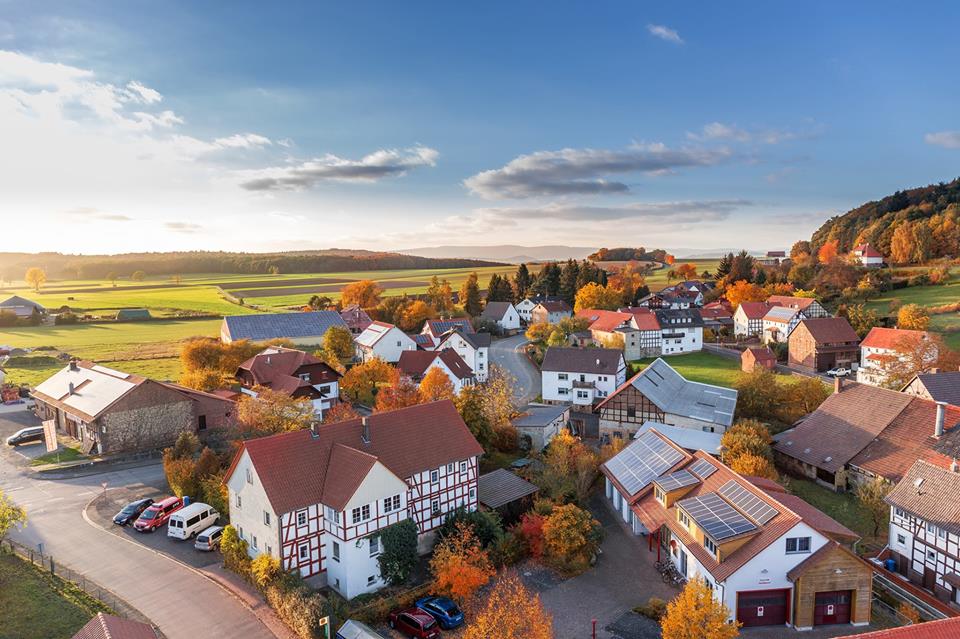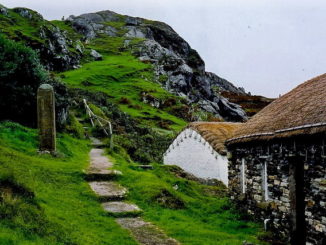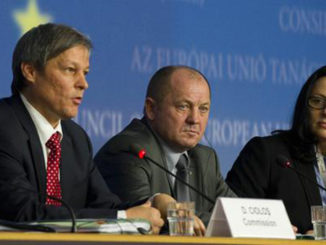
By Paul Soto and Enrique Nieto (Contact Point of the European Network for Rural Development)[1]
The momentum behind Smart Villages continues to grow – both within EU and national policy circles and on the ground among rural communities. The challenge is to translate this momentum into a policy framework that provides fast and flexible tools which meet the needs and expectations of rural communities in different parts of Europe. This will mean avoiding complicated structures and plans, mobilising what exists in each place – and supporting local action rather than words.
The Story so far – at the Policy Level
At a European policy level, the ‘EU Action for Smart Villages’ was officially launched in the European Parliament during the Spring of 2017 by the EU Commissioners for Agriculture (Phil Hogan), Regional Development (Corina Creţu) and Mobility (Violeta Bulc). It has received major support from the EU Parliament which promoted a ‘pilot project on Smart Eco-social villages’, as well as the Committee of the Regions and the European Economic and Social Committee.
In its legislative proposals for the future CAP Strategic Plans, the European Commission refers to “the development of ‘Smart Villages’ across the European countryside… in line with the Cork 2.0 Declaration” (recital 16) and proposes a target indicator (rural population covered by a supported Smart Villages strategy). However, following the approach of enhanced subsidiarity to Member States – no new specific policy instrument or dedicated budget line is proposed. Therefore, Member States will have to make use of the existing toolkit of policy instruments for supporting Smart Villages.
In this context, it is noteworthy that the Regional Development Committee in the European Parliament has proposed an amendment to the future ERDF Regulation recommending that a fixed percentage of the resources available for the jobs and growth goal equal to around 2 billion euros “shall be allocated to rural areas and communities taking into account provisions of a Smart Villages Pact to develop projects such as Smart Villages”. It remains to be seen whether this proposal or any others like it will ultimately pass into EU policy.
So, the current situation is that there are a wide range of policy interventions and tools proposed in both the CAP Strategic Plan Regulation and in the future Cohesion Policy (especially under the ‘Europe closer to citizens’ objective) that could be used to support Smart Village type approaches. These include LEADER/CLLD, other forms of cooperation, knowledge transfer, investments in basic services, digital strategies, Integrated Territorial Investments, links to sustainable urban development plans and so on. In this context, policy makers across Europe have many legitimate questions about what Smart Villages actually means, how it might add value to what already exists and how to develop and implement effective policies and supporting instrument in practice.
Meanwhile on the Ground in Rural Areas…
There is often a sense that global events are evolving so rapidly that it is difficult for institutions and policies to keep pace. The gap between laudable policy objectives and people’s lives on the ground – in the face of declining services and emigration – is breeding all kinds of negative populism. But at the same time, rural communities in many parts of Europe are developing imaginative solutions in fields such as renewable energy, climate change, digitalisation, social care, mobility, circular economy and local food chains among many others. These communities are influencing the mainstreamed narrative that rural areas are simply victims and demonstrate that rural areas are suitable places for communities to initiate small-scale innovations and transitions which could ultimately benefit the whole of society.
|
Eamon O’Hara (ECOLISE) describes just some of these initiatives: “around 1 500 transition town initiatives, 15 000 ecovillages and over three million permaculture practitioners driving community-led sustainable projects across the globe. Specifically, in Europe there are also an estimated 2 500 community energy initiatives, 1 500 Slow Food Communities and about 7 000 community supported agriculture schemes feeding over a million citizens” according to estimates by ECOLISE. Source: O´Hara, E. (2019). Transition presents an unprecedented opportunity for rural revival. Rural Dialogues. Arc2020, ECOLISE. |
Harnessing the power of emerging and particularly digital technologies is a key driver of many initiatives but by no means the only one. Technological innovations are generally seen as a tool and not the end of the wider process of people-led social innovation taking place
|
Interreg projects like ERUDITE have worked with and identified the key ingredients of “truly bottom-up digital transformation in rural areas”. They show “that this is more than just speeding up the application of digital technologies; it is about ensuring that each rural village, town and region and their communities can translate the potential of digital technologies into economic and social opportunities”. Source: Peckham, C.& Stojmenova, E. (2019). ERUDITE & smart villages: co-creating the digital transformation of rural Europe. Scitech Europa. |
The real potential of Smart Villages is to link the growing grassroots initiatives for a transition to ‘le village du futur’ (a term used by the pioneering village of Lormes in Burgundy, France) to the emerging policy momentum.
From Ideas to Implementation
Of course, many, if not most, of the grassroots initiatives mentioned above, predate and do not necessarily use the term ‘smart’. So, it is quite legitimate to ask what this new ‘label’ can add to what already exists.
Over the last two years the European Network for Rural Development has organised a Thematic Group on Smart Villages which provided a platform for rural development stakeholders from across the EU to look at many of the local initiatives taking place across Europe and consider what policy support they need at different stages of their evolution (see again Eamon O’Hara’s article in this series for some key recommendations). Based on ongoing multi-stakeholder exchanges and analysis of needs and experiences on the ground, a series of policy briefs were co-created to provide orientations about how certain existing policy interventions could be used to support Smart Villages.[2]
This work led to a series of recommendations – both about what to avoid and about how to maximise the added value of Smart Villages in different contexts.
What to Avoid
1.Avoid over-defining Smart Villages
It is understandable that some Managing Authorities and local actors have argued that the first step must be to produce clearer, tighter definition of what Smart Villages are so that this can easily be translated into selection criteria and other rules for funding. However, after nearly two years of consultations, the analysis of good practices and some small-scale local tests, the “pilot initiative on Smart Eco-social Villages” arrived at the following quite broad proposed definition:
|
“Smart Villages are communities in rural areas that use innovative solutions to improve their resilience and build on local strengths and opportunities. They rely on a participatory approach to develop and implement their strategy to improve their economic social and/or environmental conditions in particular by mobilising solutions offered by digital technologies. Smart Villages benefit from cooperation and alliances with other communities and actors in rural and urban areas. The initiation of Smart Village strategies may build on existing initiatives and can be funded by a variety of public and private sources”. Source: Pilot Project on Smart Eco-social villages (2019). Smart Villages Briefing note. |
The pilot project argued that any definition must be deliberately broad and inclusive of all the grassroots initiatives described above precisely because the starting points, challenges, opportunities and resources available to rural communities are so diverse in different parts of Europe. As being smart is precisely about innovation and finding alternative solutions it would also be restrictive to try to define them ex-ante. Rather than arguing about a more precise definition at EU level, it is better to use the flexibility being offered in the new CAP Strategic Plans and develop criteria which are adapted to different national and local circumstances.
2.Make full use of digital technologies but do not make them a precondition
It is often thought that Smart Villages are the baby sisters of Smart Cities and that their prime aim must be to catch up and close the digital divide between urban and rural areas. However, Smart Cities were originally conceived primarily in technological terms – big data, interoperability, artificial intelligence and the internet of things.
Rural communities do not usually have the scale or knowledge base to become front runners in these fields. So being smart in rural areas starts with people’s lives and then uses technology with and for them to develop practical solutions. Harnessing the power of digital technologies may well be the driver of Smart Villages in many parts of Europe but as the Pilot Project concluded “it is not a precondition for being smart”. Rural areas have the potential to offer something different to urban areas and there are plenty of innovations in service delivery, energy, mobility and food systems which are not necessarily digital and should not be excluded.
3.Avoid duplicating strategies and structures
The indicator suggested by the European Commission proposal for regulation of the CAP Strategic Plans refers to “rural population covered by a supported Smart Villages strategy”. This may give the impression that the aim is to cover rural areas with yet another set of strategies on top of the LEADER/CLLD Strategies, Local Agenda 21 Strategies, community plans, village strategies and Smart Specialisation Strategies that already exist.
In their presentations to the ENRD Thematic Group on Smart Villages and to other stakeholders, European Commission officials have repeatedly made it clear that the aim is not to create additional layers of strategic documents or structures but to build on the policy landscape that exists in each country to provide agile and flexible tools that enable local action.
The Finnish National Rural Network has organised a competition for Smart Villages which illustrates exactly this point. Lauri Hyttinen, Network Expert of the National Support Unit (NSU) Finland, says that “our approach to the Smart Village initiative could be summarised by just two words: do something!”.
|
“The purpose is not to find the village that can already claim to be the smartest. We want to identify those villages that are most eager to learn to become smarter. When applying, the villages were asked to identify the challenges they are facing, to outline their ideas about how to solve them, and to identify the key actors they will need to cooperate with, in order to achieve their goals”. Source: Hyttinen, L. (2019). The Smartest Village in Finland. ENRD Rural Connections, page 34. |
In a nutshell, everyone can be smart. It sounds simple – but it isn’t.
How and Where Smart Villages Strategies can Add Value
So, if there is no precise definition of Smart Villages, they are not exclusively digital and they should not duplicate strategies or structures, how do we avoid the concept of Smart Villages becoming so general that it becomes almost meaningless?
From the discussions in the ENRD Thematic Group, it has become clear that the specific contribution that Smart Villages can make will vary from place to place depending on a) the existing policy landscape, b) the assets and social capital of each area. This will involve designing and adapting a toolkit of interventions from the different funds suited to each context.
However, it is possible to start to identify a number of fields in which the concept of Smart Villages can add value to existing tools and which might form the basis of criteria for deciding when and where to support Smart Village initiatives.
For example, Smart Village strategies referred to in the European Commission proposal for regulation of the CAP Strategic Plans should be based on a local vision for structural change and transition to a better future. But rather than aiming to provide a comprehensive blue print, they can complement what exists by supporting collective action to respond to a specific local challenge or opportunity in a particular field.
Secondly, this action should be driven locally by cooperation between civil society, public and private actors but it should also build alliances with key external players (e.g. researchers, public authorities, etc) and lead to more sustainable business models.
Thirdly, Smart Village strategies can add value by providing faster and more flexible support to rural communities for collective innovation from an initial idea to sustainable scale up. This may allow rural communities to venture into new fields previously considered outside the scope of local action (for example, sectors strongly influenced by central regulations such as energy, health, digitalisation, climate change and mobility among others.)
Finally, in terms of the spatial scale, Smart Village strategies should provide practical support to action a very local level in villages or groups of villages (i.e. sub-LEADER/CLLD). They should build on the assets of these communities but also strengthens links with urban and regional development.
The proposed Regulation for CAP Strategic Plans contain a number of potential interventions which could be used to translate these principles into practice.
- For the initial preparatory phases of Smart Villages, the most significant of these seem to be the extremely flexible interventions supporting cooperation, including LEADER/CLLD. If properly designed these could provide fast and flexible support for group formation, animation, capacity-building, training, technical advice, piloting, small scale investments and so on (see this ENRD policy briefs on cooperation and LEADER).
- These interventions can and should prepare the ground and ‘business model’ for larger scale investments from EU Cohesion Policy, financial instruments or national and private sources.
Over the next year the ENRD Thematic Group on Smart Villages will start working on the how to design and put in place these tools to support Smart Villages in different contexts.
We invite you to join the group and contribute to this exciting work by registering as member of the Thematic Group and sharing your experiences in the Smart Villages community on facebook.
[1] Note: The contents of this article do not necessarily express the opinions of the European Institutions.
[2] See the orientations on how to support Smart Village initiatives.
Read our Rural Dialogues Series
Rural Dialogues | Peasants of Nature – French Initiative Reconciles Agriculture & Biodiversity
Rural Dialogues | Landcare Germany – Bringing Farmers, Conservationists & Policymakers Together
Rural Dialogues | Agroecology and a Living Countryside in the Netherlands
Rural Dialogues | Best Immigration Practice can help Alleviate Rural Depopulation
Rural Dialogues | What are the 3 A’s of Feeding Ourselves in Ireland?
Rural Dialogues | Radical Old Ideas Gaining Ground in New Rural America
Rural Dialogues | Transition Presents an Unprecedented Opportunity for Rural Revival
 Paul Soto is currently Senior Policy Expert of the ENRD Contact Point where he coordinates the Thematic Group on Smart Villages. He used to be Team Leader of the ENRD Contact Point and the FARNET Support Unit. He was previously involved in the LEADER Observatories and URBACT. He was co-author of the EC Guidance on CLLD and was the manager of a LEADER local action group in Spain during LEADER I and II. The ENRD serves as a hub for exchange of information on how Rural Development policy, programmes, projects and other initiatives are working in practice and how they can be improved to achieve more.
Paul Soto is currently Senior Policy Expert of the ENRD Contact Point where he coordinates the Thematic Group on Smart Villages. He used to be Team Leader of the ENRD Contact Point and the FARNET Support Unit. He was previously involved in the LEADER Observatories and URBACT. He was co-author of the EC Guidance on CLLD and was the manager of a LEADER local action group in Spain during LEADER I and II. The ENRD serves as a hub for exchange of information on how Rural Development policy, programmes, projects and other initiatives are working in practice and how they can be improved to achieve more.
 Enrique Nieto is Senior expert on Territorial Development policies of AEIDL (the European Association for Information on Local Development). In that role, he is engaged on the European Network for Rural Development (ENRD) since 2015 where he currently coordinates the Thematic Group on Smart Villages and carries out analysis of rural development policies for the European Commission and other stakeholders. Enrique has also been the Quality Officer of the communication team of the LIFE Programme during the last 3 years.
Enrique Nieto is Senior expert on Territorial Development policies of AEIDL (the European Association for Information on Local Development). In that role, he is engaged on the European Network for Rural Development (ENRD) since 2015 where he currently coordinates the Thematic Group on Smart Villages and carries out analysis of rural development policies for the European Commission and other stakeholders. Enrique has also been the Quality Officer of the communication team of the LIFE Programme during the last 3 years.





1 Trackback / Pingback
Comments are closed.